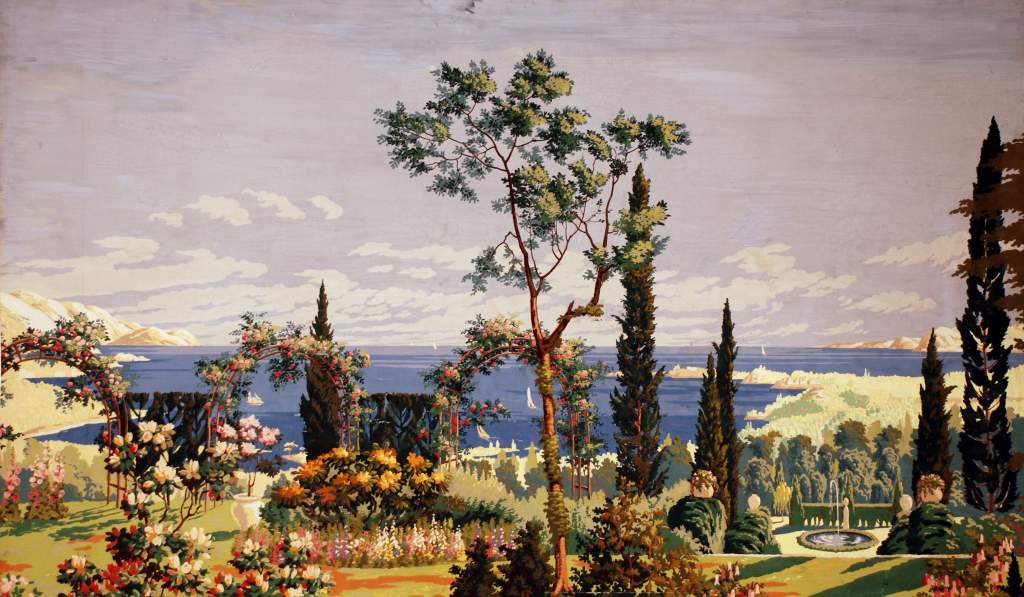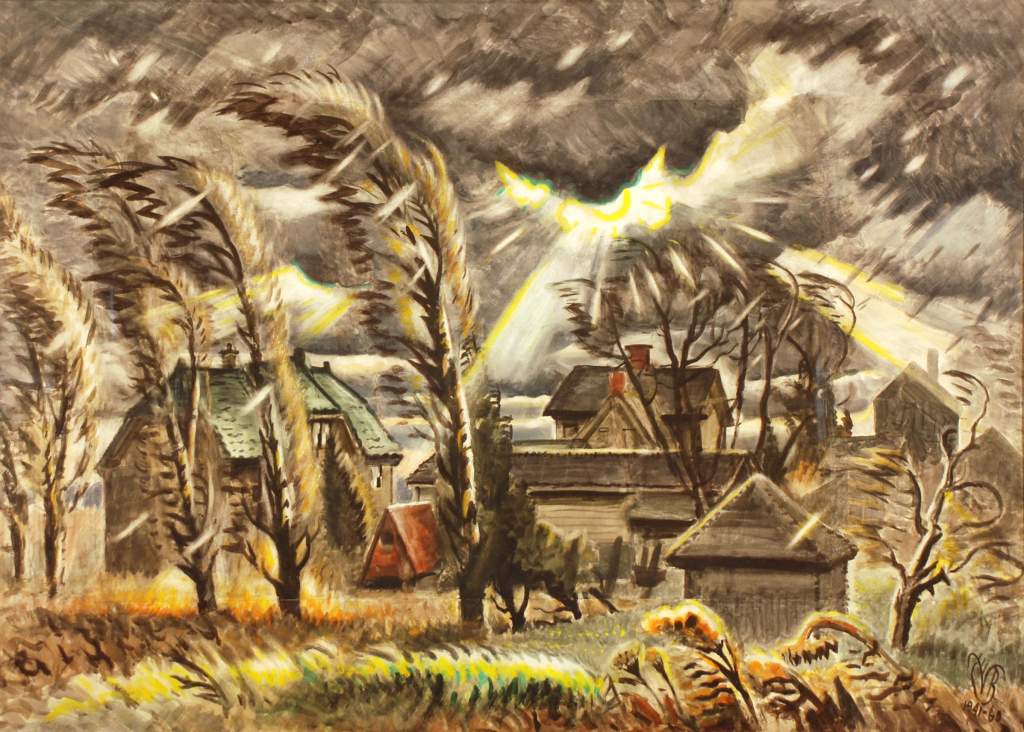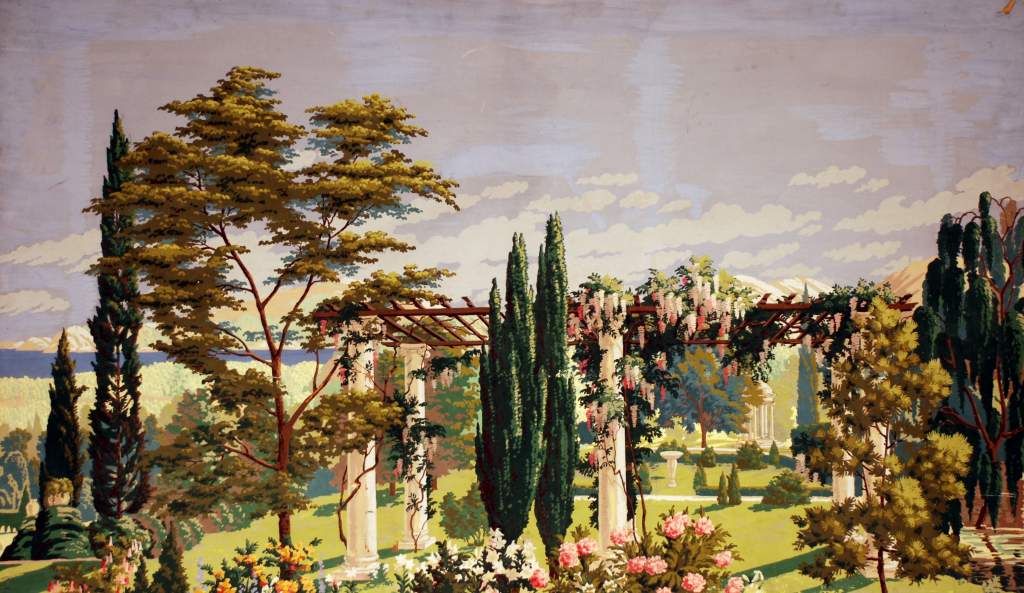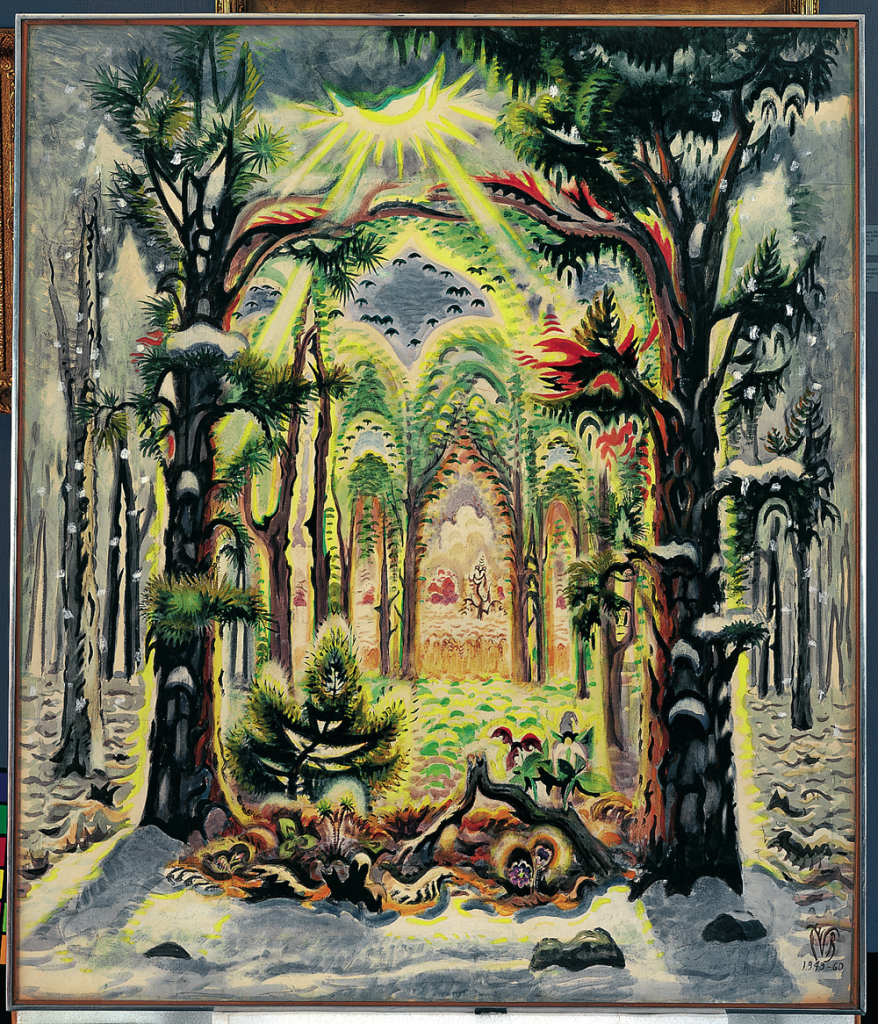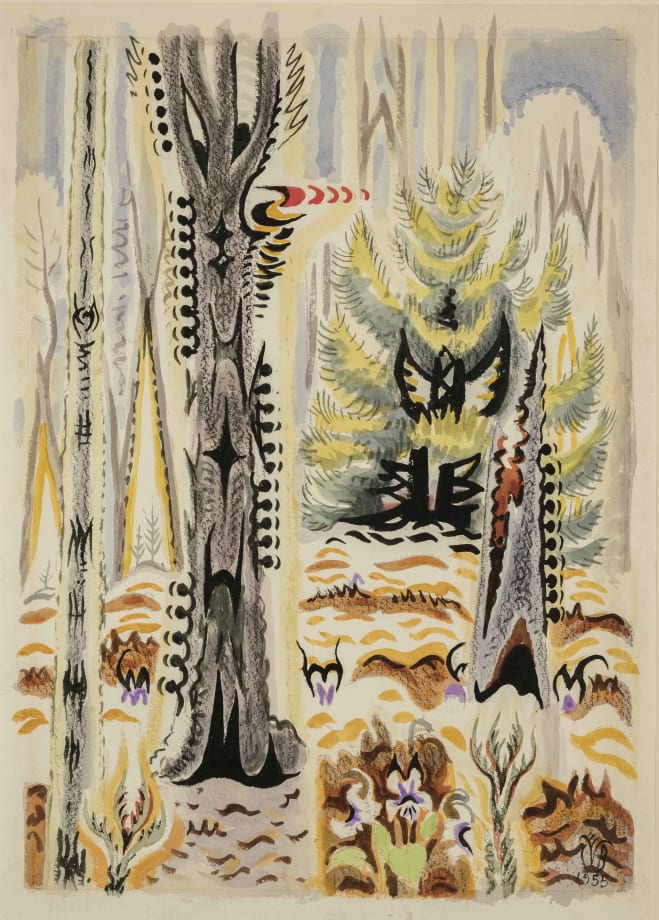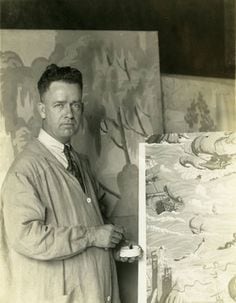
Charles E. Burchfield
Charles Ephraim Burchfield (1893–1967) was an acclaimed American painter, renowned for his captivating watercolor landscapes. Burchfield’s birth took place on April 9, 1893, in the charming Ashtabula Harbor, Ohio. A few years later, his family relocated to Salem, Ohio, where he achieved the honor of being the valedictorian of his high school class in 1911. His artistic journey commenced at the Cleveland School of Art from 1912 to 1916, under the tutelage of distinguished mentors such as Henry G. Keller, Frank N. Wilcox, and William J. Eastman.
In 1921, Burchfield embarked on a new chapter, moving to Buffalo, New York, to pursue a career as a designer at the esteemed wallpaper company, M.H. Birge & Sons Company. Shortly after, he entered into matrimony with Bertha Kenreich, with whom he raised a lovely brood of five children. The enchantment of Buffalo’s streets, harbor, railroad yards, and picturesque surroundings left an indelible mark on Burchfield, leading him to embrace a more realistic artistic style that persisted for several years.
It was in the year 1928 that Burchfield encountered Edward Hopper, forming a deep friendship after Hopper’s essay on Burchfield was published in the July edition of Arts magazine. Hopper eloquently stated, “The art of Charles Burchfield is undoubtedly rooted, not in art itself, but in life, and the life that he knows and adores most.”
During the 1940s, Burchfield revisited concepts from his earlier fantasy scenes, which he often expanded into transcendent landscapes. Ever delving into the enigmas of nature in a quest to unveil his inner emotions, Burchfield once expressed, “An artist should depict not only what nature reveals, but what is inherently present. To accomplish this, he must devise symbols that, when used skillfully, render his work even more authentic than reality itself.” He adhered to this artistic vision until his passing, producing some of his most mystical creations.
Burchfield’s artistic accomplishments were commemorated with the establishment of the Charles Burchfield Center at Buffalo State College on December 9, 1966, merely a month before his demise on January 11, 1967. Today, the Burchfield Penney Art Center stands as a testament to the artistry and vision of Charles Burchfield and the talented artists of Western New York. The museum boasts the largest collection of Burchfield’s works, along with more than 70 volumes of handwritten journals, 25,000 drawings, and other ephemera, including a meticulously replicated model of the artist’s Gardenville, New York studio.
